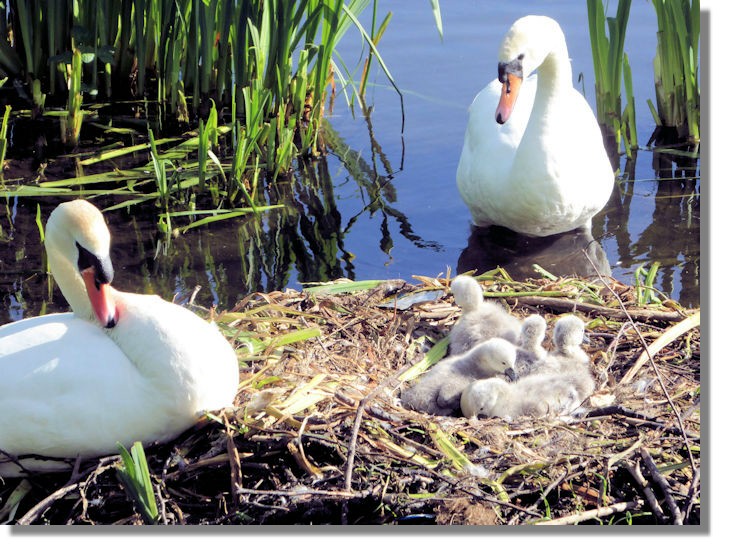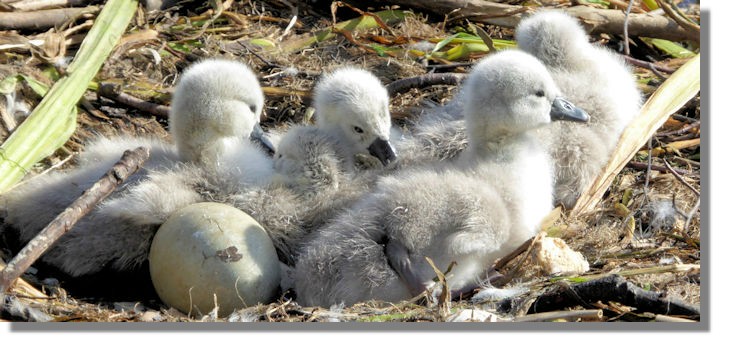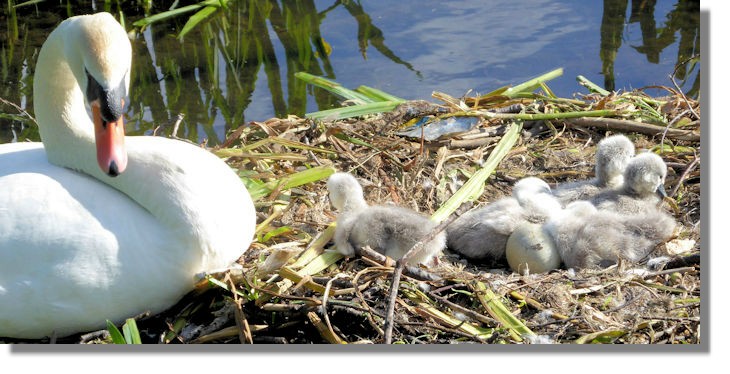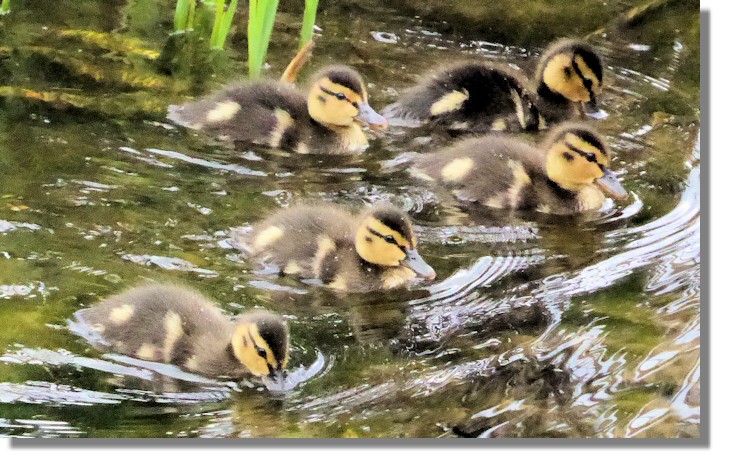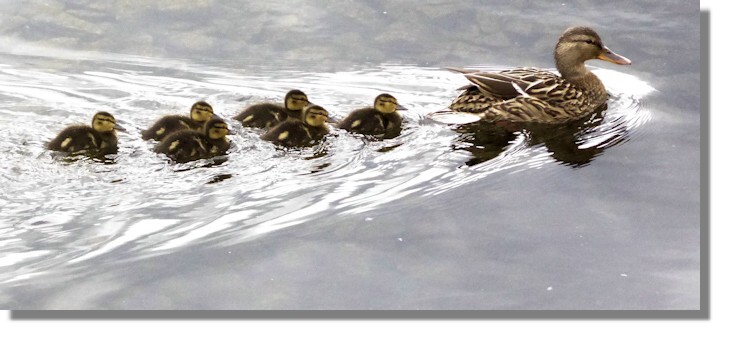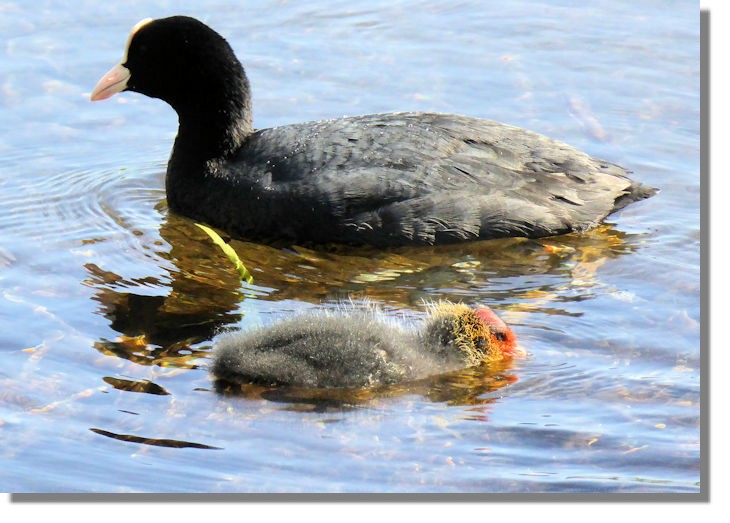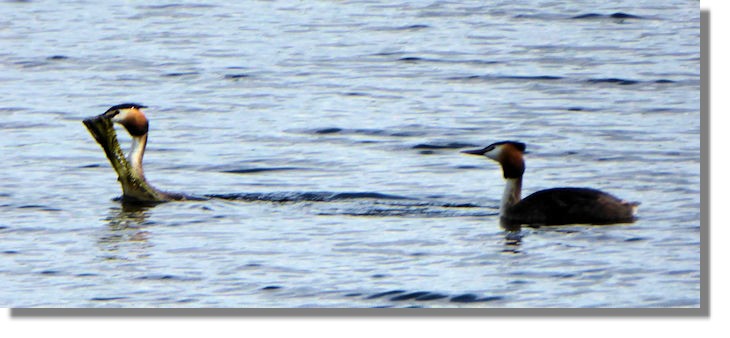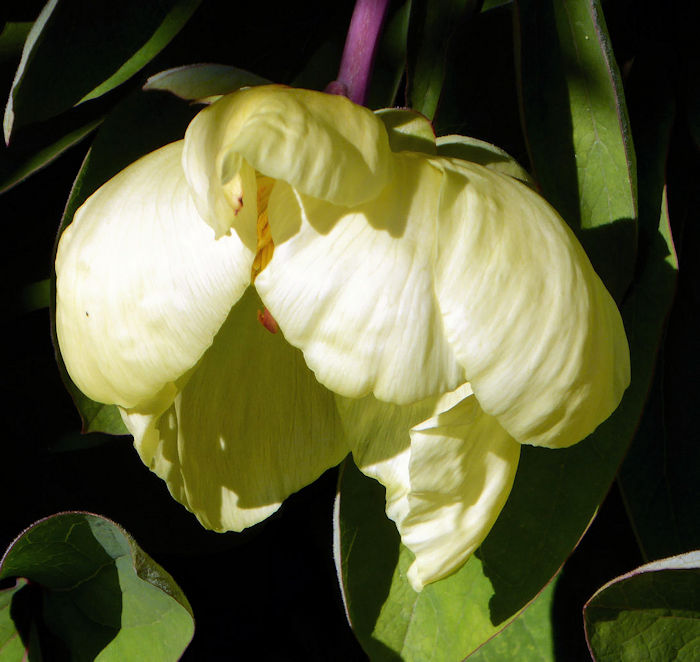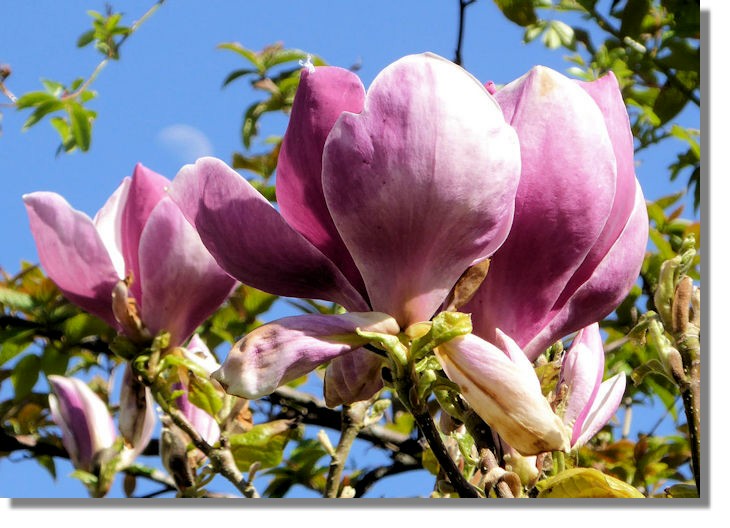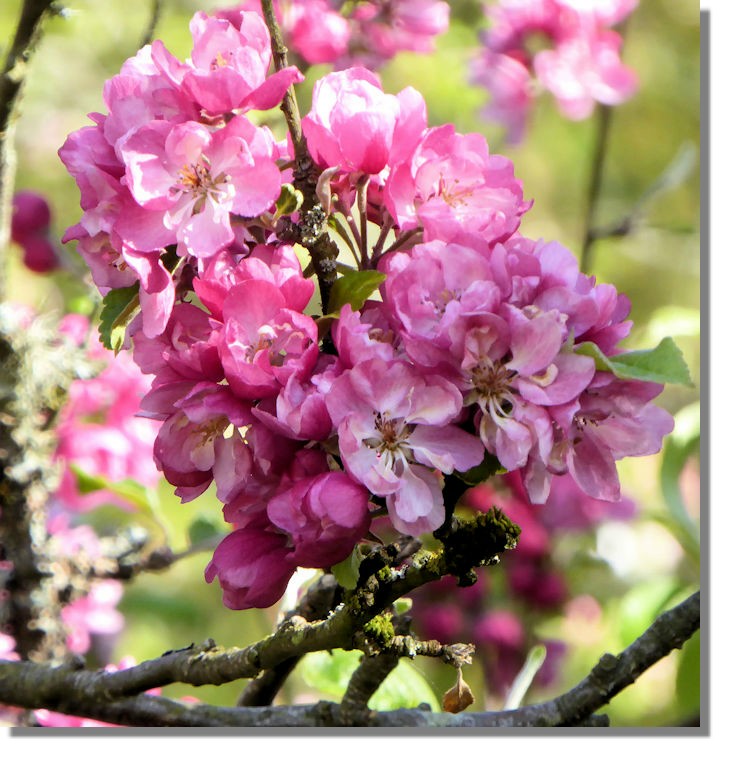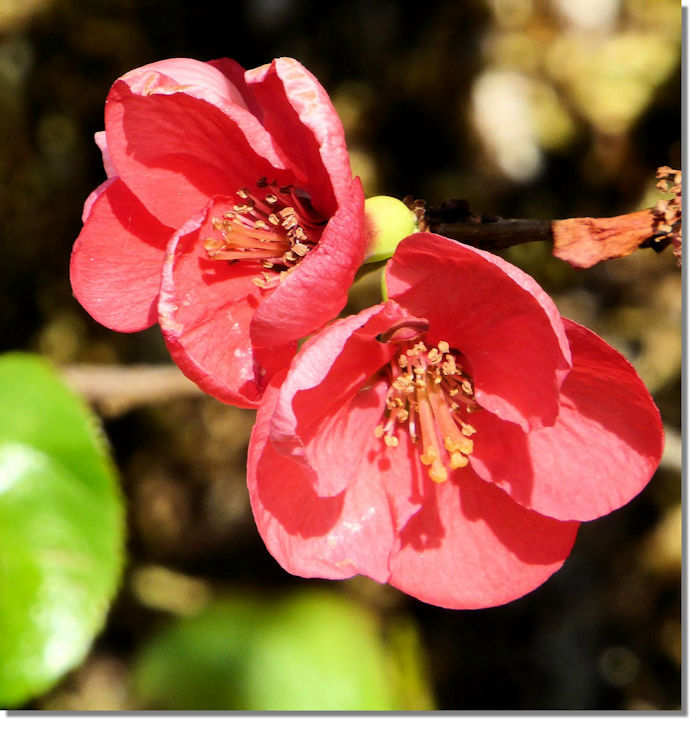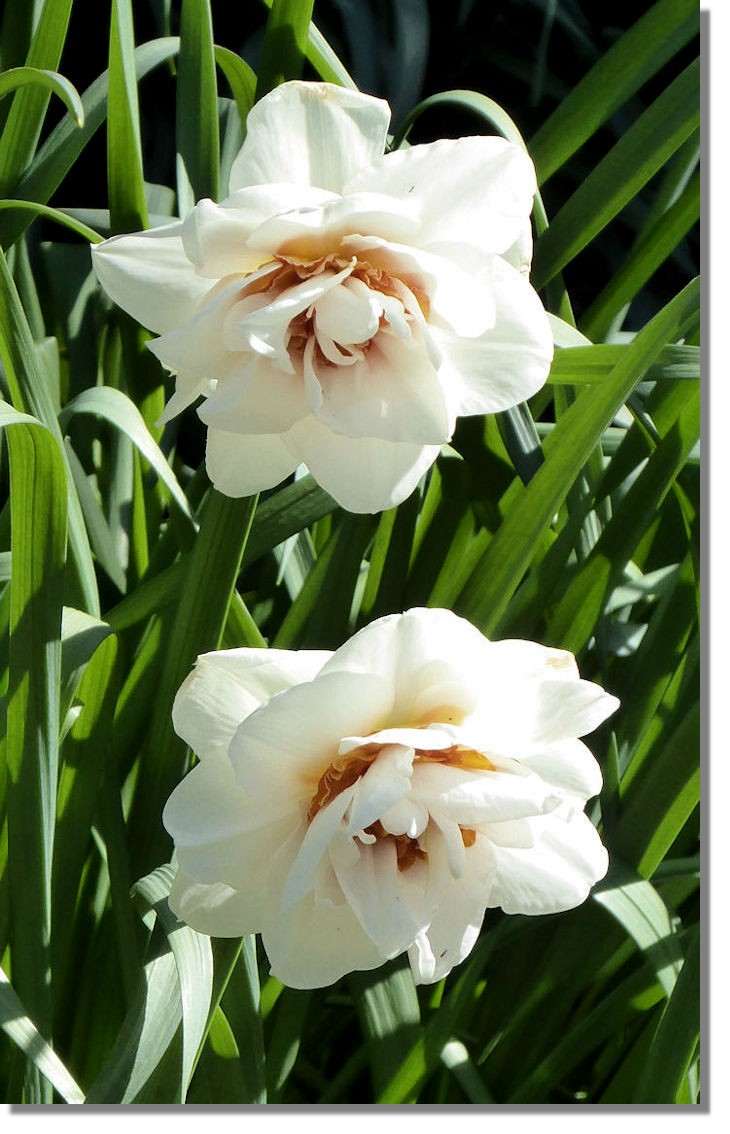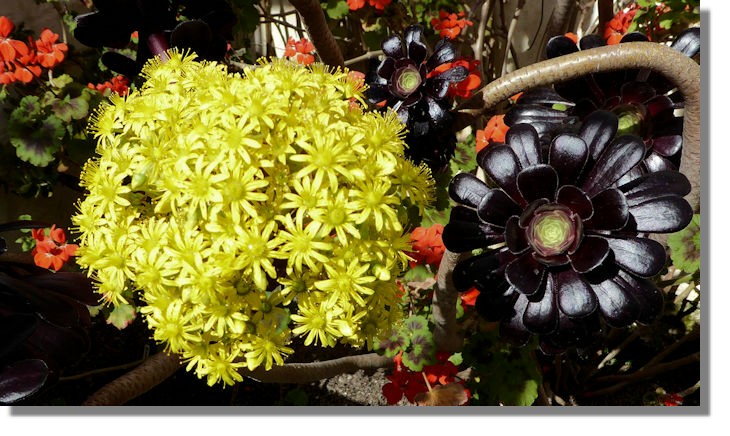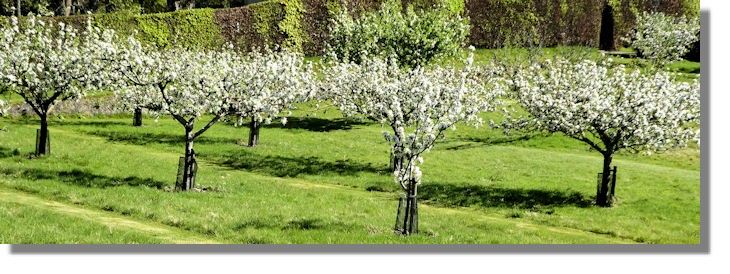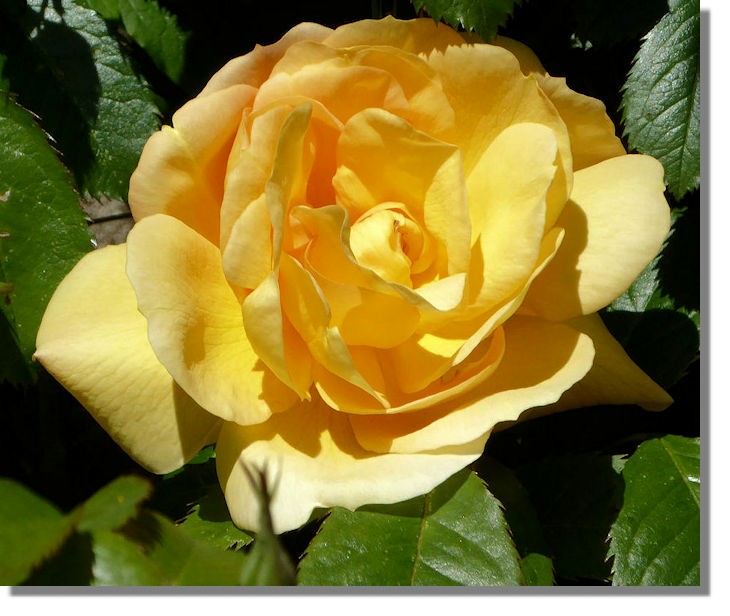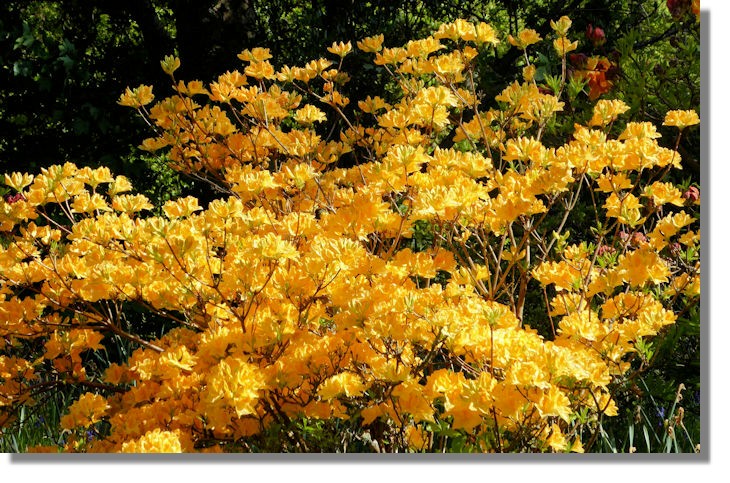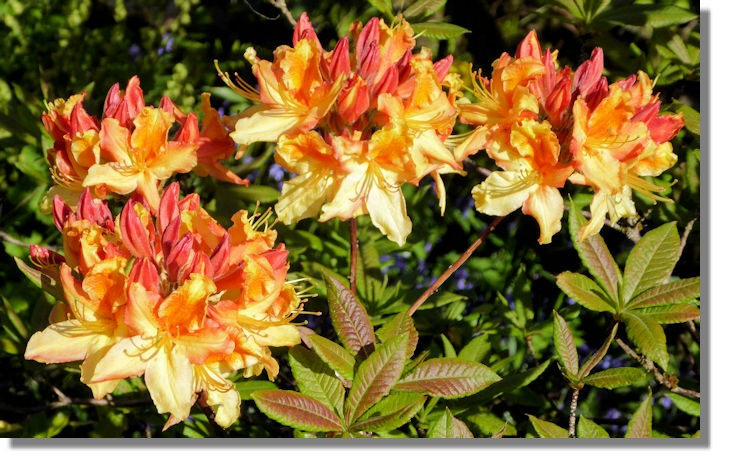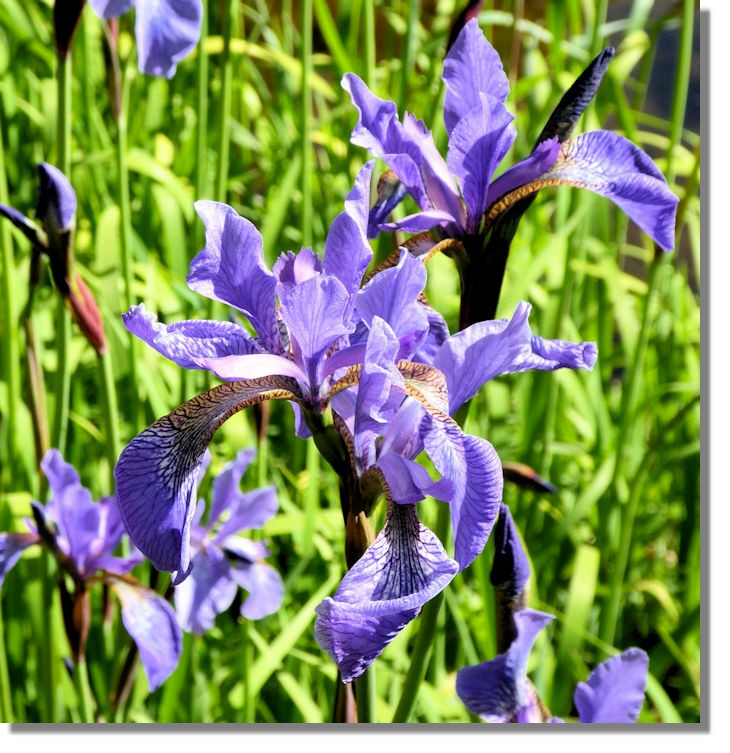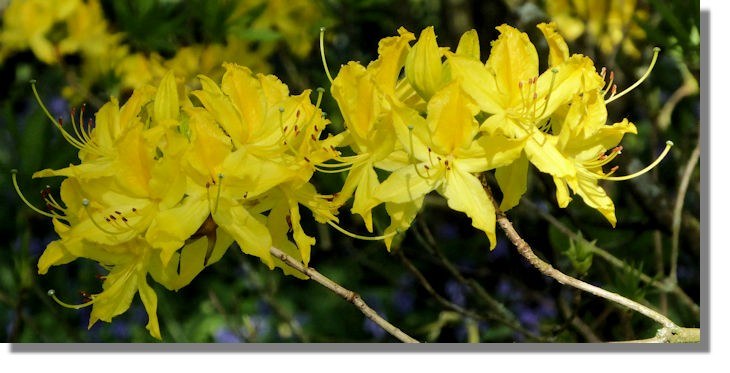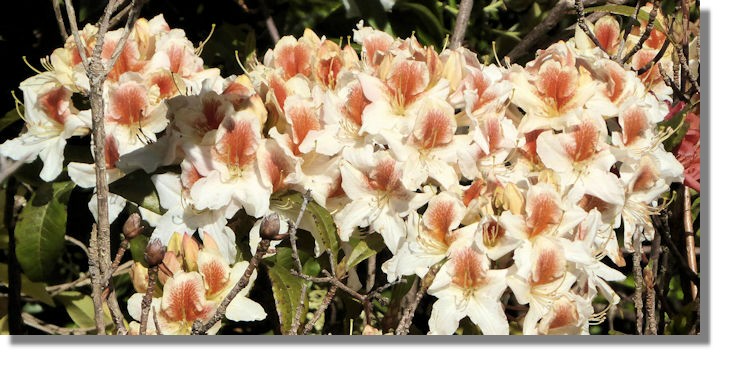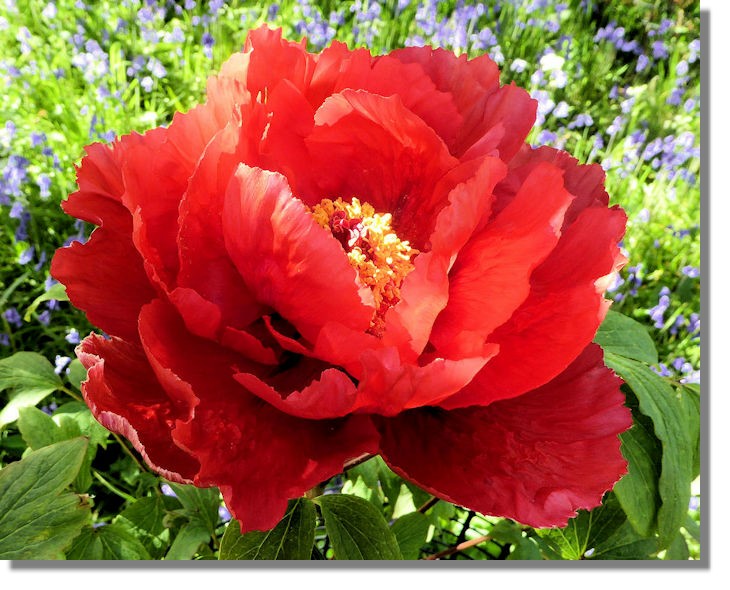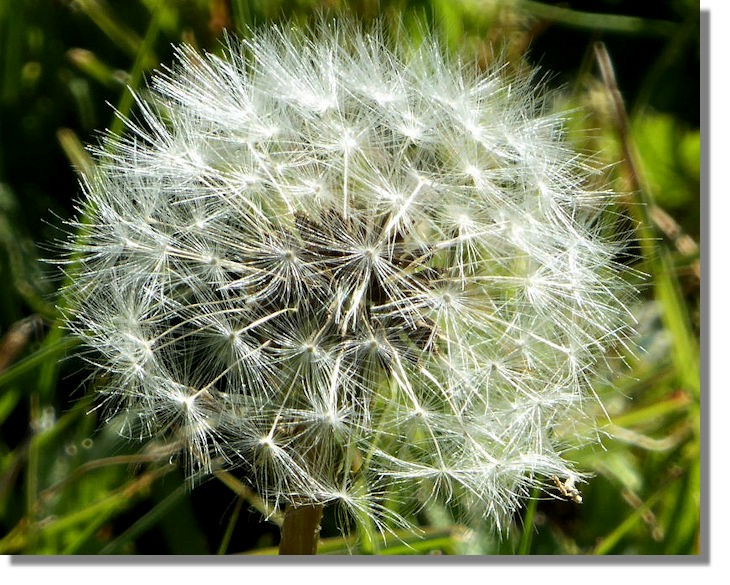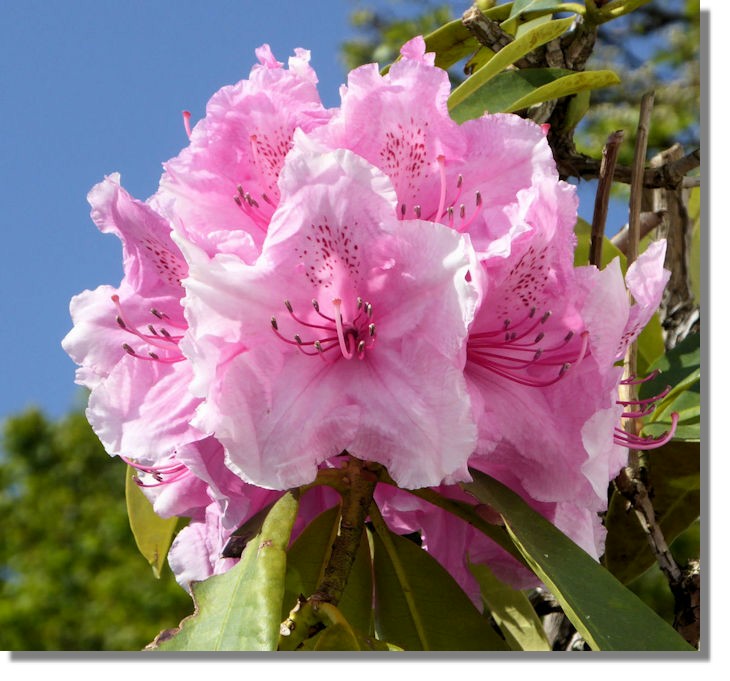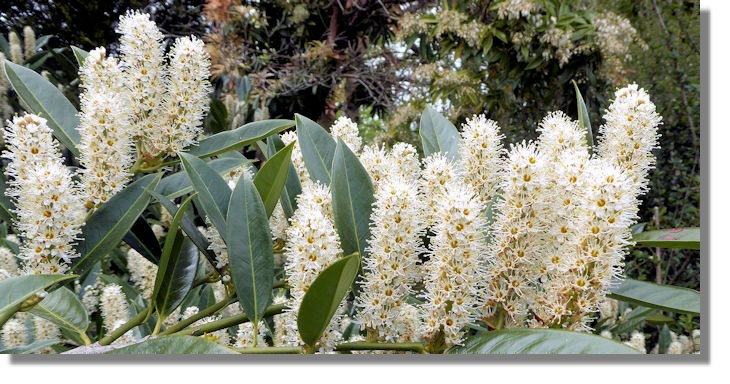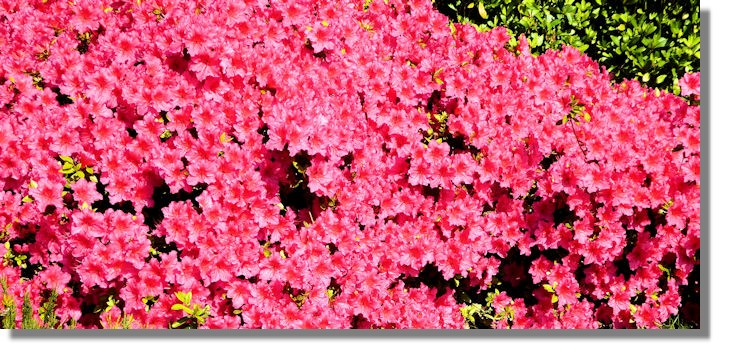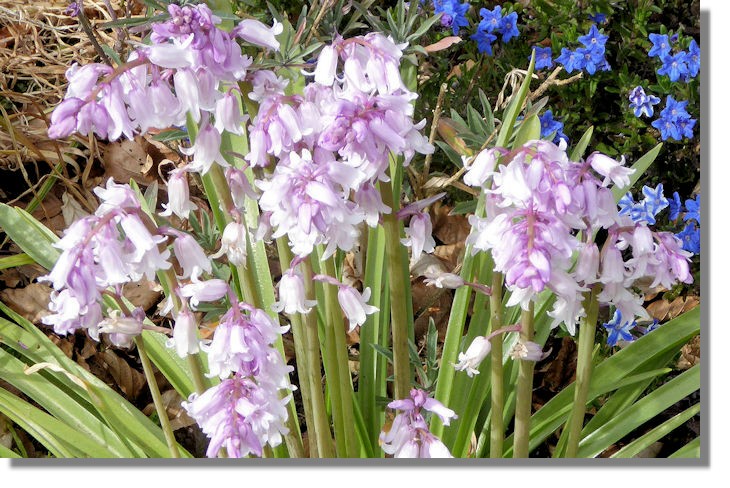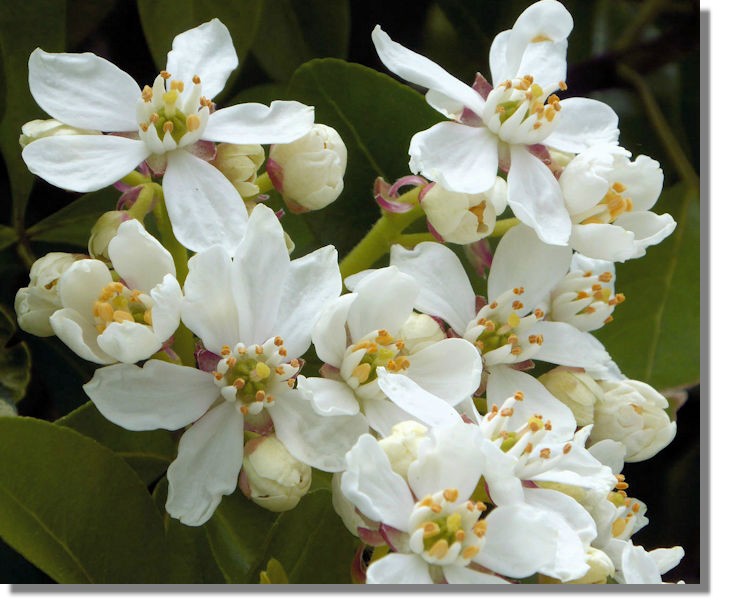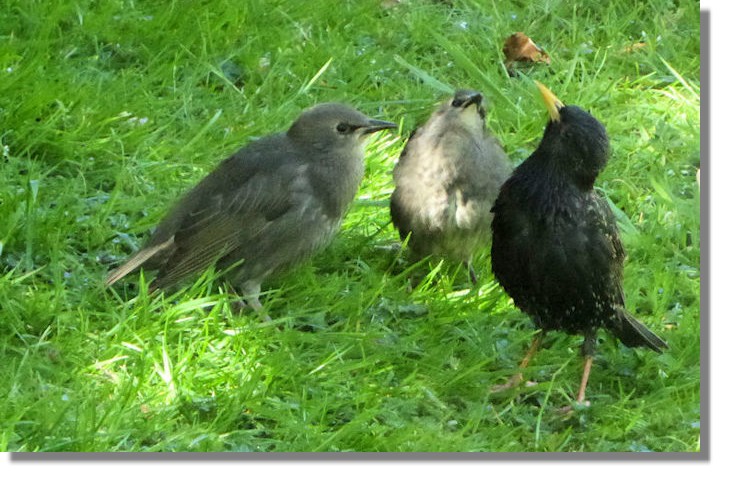Scottie's Photo Diary
- May 2017
Background
I never go anywhere in Scotland without my camera and I take photographs wherever I go. Sometimes I go somewhere specifically to take photographs with a view to adding another page to the Rampant Scotland site. On other occasions I just see something that makes an attractive picture or else it's another graphic to add to the library to perhaps use on a future project. It thus forms a pictorial diary of my travels which can be shared by everyone!This is a selection of photographs I took in May 2017.
Hogganfield Loch and Park
It takes an average of 35 weeks for a swan to incubate her eggs to get to the stage of getting them hatched. During that time the parent doesn't leave the nest so it must be very hungry by the time they hatch out. The male does none of this "work" but does cruise around near the nest and aggressively chases off any other swan that comes near.
It was only when I later looked at the picture on the PC monitor that I realised that there was one egg which hadn't hatched. Even in June, the weather isn't particularly warm and the newly hatched cygnets often snuggle down under the cob (the name for a female swan) to keep warm. On this day the sun was shining and it was fairly mild so they didn't need that extra protection.
Most surprisingly a few says after taking the earlier pictures we went back to the nest site and found that the original swans and their cygnets were feeding a short distance away from the nest - and another pair of swans had settled down on the nest! We weren't able to see what happened when the original swans came back and found the "squatters". Suffice to say that a few days after that, there was no sign of the other swans - but there was a Mallard couple sitting on the "des res" with three ducklings! I suspect they would get chased away too!
Mallard ducklings can be a target for bigger birds like large gulls but it was great to see all six of these ducklings surviving a few days later. These little bundles of fluff get bigger as the days go by and their chances of survival increase.
In the picture above he ducklings are all swimming in a line behind "Mum" in an orderly fashion but within a few days they become more independent and spread out a bit more on the water.
Unlike the Swans and Mallard ducks the Coots tend not to have large families - two youngsters is the norm. When they first hatch out their lack of down or feathers on the front of their heads create thee sort of features that only a Coot mother and father could love!" Unlike the swans and Mallard ducks the Coot parents are extremely attentive and provide a constant supply of food for their offspring.
The Great Crested Grebes tend to have their family a bit later in the season and in May are still at the "courting" stage. They have an elaborate courting dance each year during which the male will present pond weed and even fish to impress his mate. In this picture he had dived to pick up some pond weed for his lady love. It's not as if they will create an elaborate nest though - it is usually just a loose, flimsy collection of sticks and reeds.
Greenbank Gardens
Over the years I've taken a number of pictures of Greenbank House - but never with such an attractive sky as a backdrop.
Paeony plants are often some shade of red but there are also white or even a sort of brown shade and occasionally yellow varieties (as shown here). Greenbank has a number of examples of this attractive bulbous flowered shrub.
The garden books say that there are over 200 different varieties of Magnolia - named after a French botanist Pierre Magnol. These plants are ancient as they evolved before bees had developed. Fossilised examples have been found dating from over 20 million years ago.
To be honest, when I see flowers like these, I am never certain if they are apple or cherry trees unless I see the tree later in the year when the fruit appears. But the cluster of flowers here seem to suggest that this is a cherry tree as I've never seen an apple tree with that number of apples clustered on one stem!
The waxy flowers of Chaenomeles, however are unmistakeable! These shrubs are originally native to Korea, China, Bhutan, and Burma. The flowers are usually bright orange-red as here, but can be pink or white as well.
Greenbank has a reputation for its wide range of different styles of daffodils. Horticulturalists have created blooms of in a range of shapes and colours which can be quite a contrast to the traditional "host of golden daffodils. Somehow, after years of selective breeding, they can come up with bulbs that produce specimens that maybe started as a daffodil but ultimately look radically different after losing its original trumpet and has orange as well as yellow centres
Here is another style which has "multiple trumpets" similar to the one above but with totally different colours, with white predominating.
Geilston Gardens
The succulent Aeonium plant is sub-tropical and so has to grow in a heated greenhouse in Scotland. Most originate from the Canary Islands and are related to the sempervivum. It is sometimes known as a "tree houseleek". I don't recall seeing it in flower before (a quick search through my graphics library produced a number of examples of the plant at Geilston and at botanic gardens elsewhere but none with these impressive flowers which contrast so radically with the glossy rosette of its leaves.
Well, I know for certain that these are apple trees in what was originally an orchard beside Geilston House - I've taken pictures of the glossy red apples in the autumn in previous years!
Not the "Yellow Rose of Texas" but the "Yellow Rose of Geilston". It is a rambling rose that grows clinging to supports up the front wall of Geilston House.
Another treat for readers who like yellow flowers - this time a large azalea growing in a wooded area outside of the walled garden. Judging from its size it has been giving enjoyment to people walking in that part of the garden over many, many years.
The reddish tinge in the leaves of this azalea complements the colour in this azalea which adds to the attractiveness of the variety.
The iris growing along the edge of the Geilston Burn were only just coming into bloom.
Another example of yellow azalea, this time in close up and making the stamens more distinct.
Yet another of the many varieties of azalea growing in the grounds of Geilston House. You'll gather that azaleas are one of my favourite plants (see another example below from my own garden!)
Following on from the yellow paeony in Greenbank, here's the more frequently found variety coloured red!
Gardeners often try to eradicate wild flowers (more often referred to as "weeds" in formal gardens) but they are being encouraged more these days as they are a useful food source for butterflies and insects. And they also can be very attractive - how often have you admired a dandelion seed head (or blown the parasols off the plant as a "dandelion clock" like this one?)
My Own garden
This rhododendron "Pink Pearl" was planted soon after we moved into our present house which was about 30 years ago. It has grown steadily since then but has had a new lease of life as a tall, leafy shrub in the garden next door was cut down last year.
This evergreen laurel really comes into its own at this time of year when it becomes covered in these white spiked flowers. These don't last long unfortunately but the blanket of flowers at the end of the garden is impressive while it lasts!
As noted earlier, Azalea is one of my favourite flowers and this one growing in the front garden spreads further and further each year, extending this solid mass of colour. It's also one of the evergreen varieties so it fills in the space with green leaves for the rest of the year.
Bluebells come in shades other than blue with Pink and white sometimes mixing. Although Bluebells are often associated with Scotland (Campanula rotundifolia) which has more bell-shaped flowers, many of the bluebells in our gardens are the introduced Spanish variety which spread by seed and can become invasive and push out the native bluebells.
Choisya (also known as Mexican orange or mock orange originated in Arizona, New Mexico, Texas and south through most of Mexico, but seem to survive in the winters of west central Scotland. In addition to the attractive scented white flowers, its golden leaves are not deciduous so the bush adds colour to the garden even in winter.
The bird feeders in my garden are designed to allow small birds (including sparrows, dunnocks, finches and bluetits) in to the peanut nibbles and bird cake, but they mainly keep out the larger birds. However, birds like pigeons, blackbirds and starlings have learned to stand underneath and pick up any crumbs dropped by the "messy eaters" above. Here, a starling parent is teaching its two youngsters the technique!
If you want to read the other Diary entries going back to 2009, there is an Index page.
